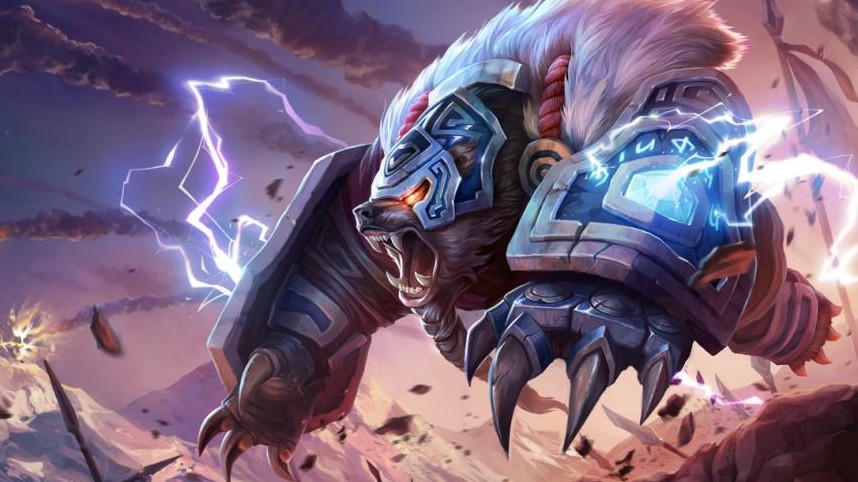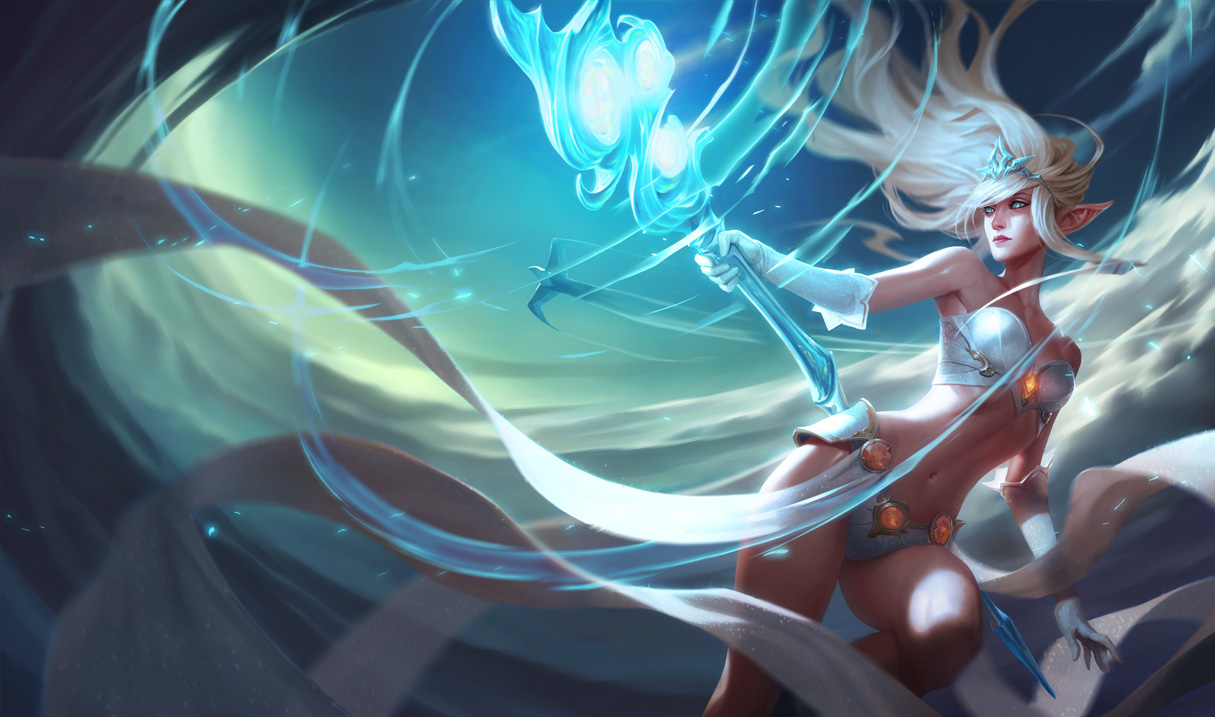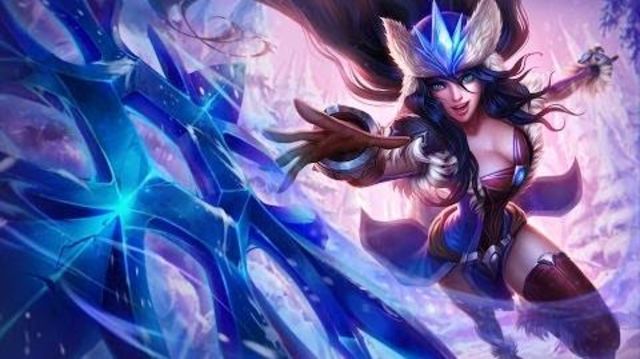It's (almost) always too soon to give up in League of Legends

Last time, I wrote about how to close out a game, identifying key moments and elements to break a siege or bait a fight. But the opposite problem exists too: teams that give up too readily. Western pro teams, in particular, are known to simply restart a scrim entirely if a level one fight goes the wrong way—which is, I feel, a tremendous mistake on their part.
Scrim restarts deny the teams two critical lessons, one on either side. For the team that comes out ahead, they lose the opportunity to learn how to press an early advantage. At the uppermost level, it's assumed that teams like SKT T1 can consistently convert a level one triple- or quadra-kill into a solid map win, but the most recent LCS games have demonstrated a lack of that capability among the west's best. Between poor vision control, questionable shotcalling or simply slipping up a few Dragons here or there, the early leads are often squandered away by reckless play.
Sure, it takes a lot of skill for Fnatic and others to draw out a victory from a deficit. Credit goes to them for identifying those opportunities. But blame also has to go onto H2K and others for having openings for Fnatic to exploit in the first place.
The second lesson missed is, basically, how to play like Fnatic. Tenacity isn't just a stat related to crowd control duration -- it's also a mental habit to cultivate. And, if anything, it's remarkable that Fnatic's managed to cultivate it despite being the undefeated leaders of the EU LCS. Over in North America, TSM's struggling badly to adapt to a world where they don't have an absolute advantage in any phase of the game. Their current situation is so at odds of how they've functioned in the years past that everybody from the players to the coaches seem to be flailing wildly looking for any solution at all.
It would help, of course, to first identify the fundamental theories that govern the odds of a tenacious underdog victory.
Perimeter alarms

Where is the best place to put down a ward if you suspect the enemy jungler to be setting up ganks? A lot of teams, through their actions, seem to prefer setting up vision points within the chokepoints of their own jungle. Certainly, that's the safest option. It's within their controlled perimeters, help is much quicker to arrive than enemy reinforcements, and their own turrets are a short hop away if a duel goes badly. And despite this, own-jungle warding is a noob-trap.
The biggest gaming news, reviews and hardware deals
Keep up to date with the most important stories and the best deals, as picked by the PC Gamer team.
The problem is: if you see them in your jungle, they're already in position to strike. Actually being in that choke point by the Ancient Golem buff is the last step of a good team's preparations for a fight, and their reinforcements aren't that far away after all. It also means that it's already too late for their gank target to run away. Going through the jungle is a common way to set up for a tower dive, as it allows the jungler to cut off their retreat path.
Therefore, the actual best place to put wards is along the enemy entrances at the river. Their tribush, their chokepoints, even in the middle of their lanes. Such placements give you an early warning on their intentions, giving you more than enough time to react and formulate plans of your own. Or, at the very least, run away before things get too hairy.
Getting wards to those locations is, of course, a risky endeavor. The best way a support can deliberately throw the game is to wander aimlessly towards an enemy chokepoint and facecheck the fog of war. Champions with long-range skillshots have a generally easier time of warding, of course. Janna's Howling Gale and Nami's Aqua Prison can afford the support player a safe window of opportunity to scout out a ward, at the cost of a little mana. The AD carry can help out as well: an early Scrying Orb has the range to penetrate enemy turf for a safe check, and can even be upgraded to drop a short-duration ward at major choke points. Champions like Kalista and Ashe have their own innate versions of the Orb built right into their kit, allowing further control.
But there are some itemization choices that can alleviate this for the support. Or, rather, one item: Twin Shadows. TS's been nearly forgotten about since they removed the magic resistance, but deterrence supports like Janna can still get a significant amount of utility out of it. It's relatively cheap, has a cooldown reduction component, and (relevant to the discussion on vision) is deliberately designed as a scouting item by casting out two hunting spirits to lurk in the enemy jungle and tag any hostile champions they run across.
While the perimeter for ideal ward locations does get pushed back as you lose towers and map control, the emphasis on preemptive locations exists throughout the game. In fact, it only grows in relevance the farther behind your team finds itself in gold and items. The only way to avoid a disastrous fight is to know where not to fight in the first place, and a Twin Shadows/Scrying Orb set will go a long ways to keeping a team from totally folding.
Of course, that won't necessarily save your turrets from further harm. That requires having the right champions.
Clearance sale

"Clear-speed" describes two actions: how quickly a jungler can tear through their camps, and how fast a champion can mow down a wave of freshly spawned minions. For the sake of defensive play, the latter definition is the most important. In most cases, teams cannot push a tower without minion support. There are defensive bonuses that trigger if there aren't minions around, and the tower damage is usually significant enough to crack even the toughest champions, encouraging teams to schedule their fights according to the minions' spawn timer.
As such, clearance speed matters on both offense and defense. On the offense, it guarantees that minions will be hitting the tower for you, instead of duking it out uselessly with enemy minions. On defense, it keeps that exact thing from happening. It's a major reason for why Sivir is such a high-priority pick right now: the Bouncing Blades and Boomerang combo almost instantly deletes minion waves, allowing her team a tremendous amount of easy wave manipulation around turrets. Similarly, Corki's got nothing but area of effect damage spells on his side.
But it isn't just AD carries (though, of course, Statikk Shiv's such a good item specifically because of the wave manipulation it offers them). Mid laners, too, are responsible for this. Ziggs, in particular, is the king of defensive play. The minefields, knockbacks and AOE clearance in his kit, not to mention the ability to bombard two lanes at once, makes it exceedingly dangerous to contest his turrets without a solid advantage at the aggressor's disposal.
But after you've defended for 50+ minutes, then what?
The long con
Not every team composition necessitates a late-game hypercarry. But defensive strategies do inherently favor them. The "ideal" balance, if pick-ban phases make it feasible, is to have two carries for two different situations. An early game "bursty" carry that dominate small skirmishes, like Corki, Sivir and most mages, are also those that tend to fall behind because of bad level one. Late-gamers like Jinx and Tristana, on the other hand, start off at a significant disadvantage, but eventually grow to be untouchable armor-piercing monstrosities that lay wast to even the toughest of tanks, easily outstripping the performance of more mid-game oriented carries with a full six-item build.
Beyond team composition, warding strategies and champion choice, though, there's the most important factor of the second lesson: how to keep looking for opportunities. And the opportunities will exist. There is an upper bound for how much of an advantage a team can have over another: when both sides are at six items and level 18, they are effectively on equal footing again. If not favoring the defender! The combination of base walls to deter vision and skillshots, close distance to healing fountain, and increasingly long respawn timers all come together to act as punishment for those unable to safely close out an advantageous game.
Which is why Fnatic can never be counted out. They, at least, have the mental tenacity to look for those opportune turnaround moments. The sign of a great team is not (just) how dominantly they get ahead, but how sneaky they get when the going gets tough. Remember: the enemy team only wins if they can blow up your nexus. There's absolutely nothing that obliges you to do it for them.

